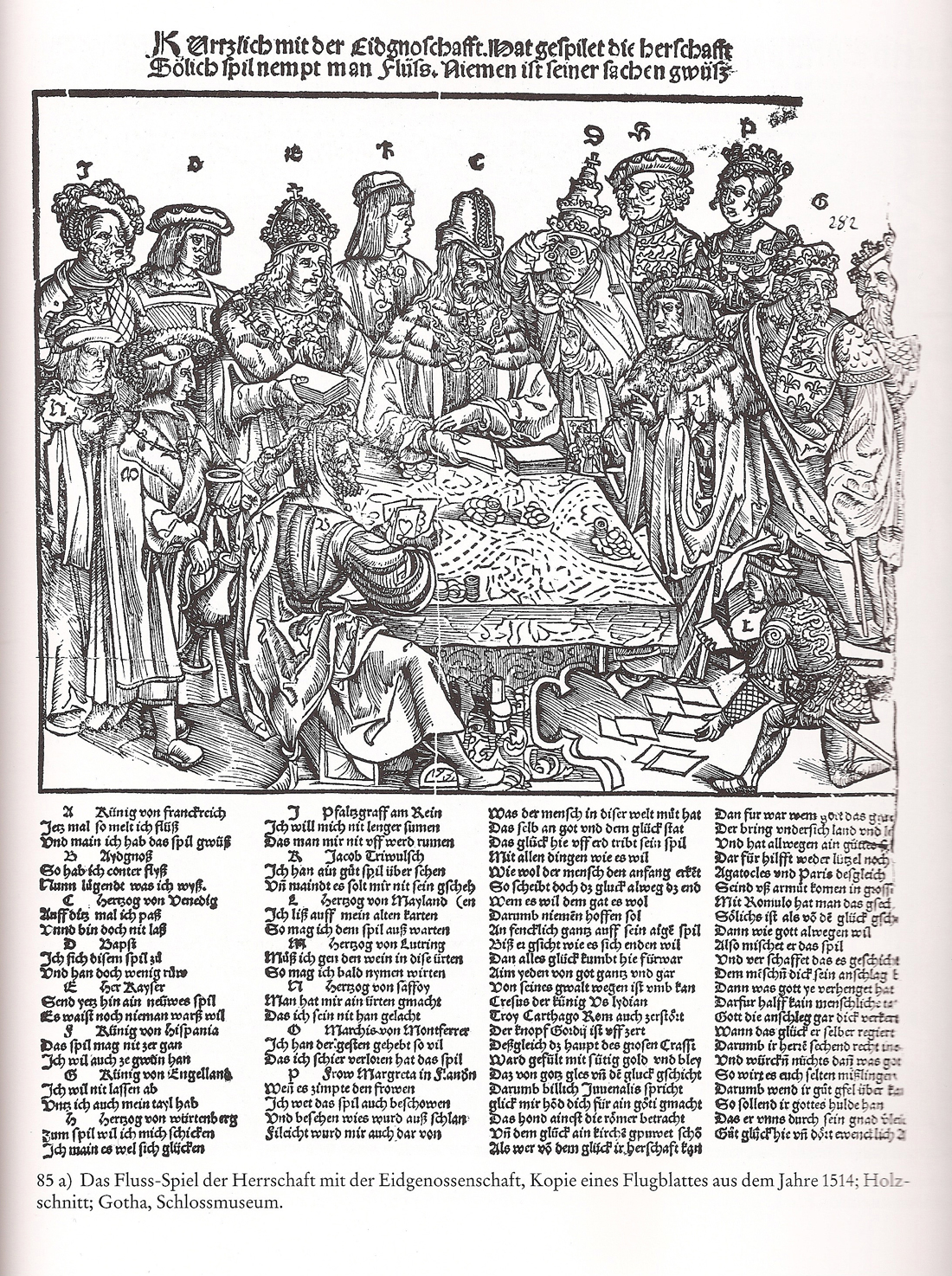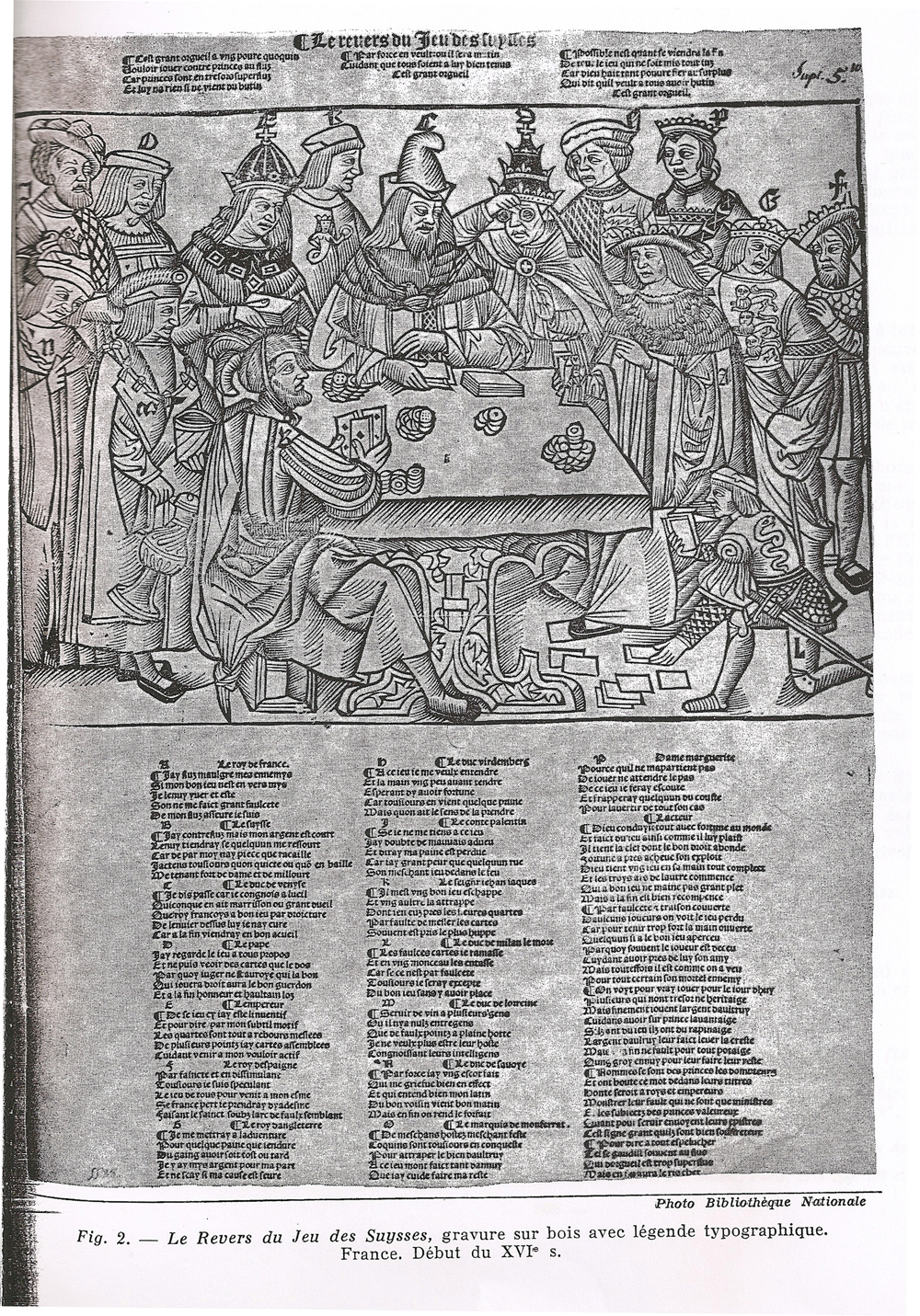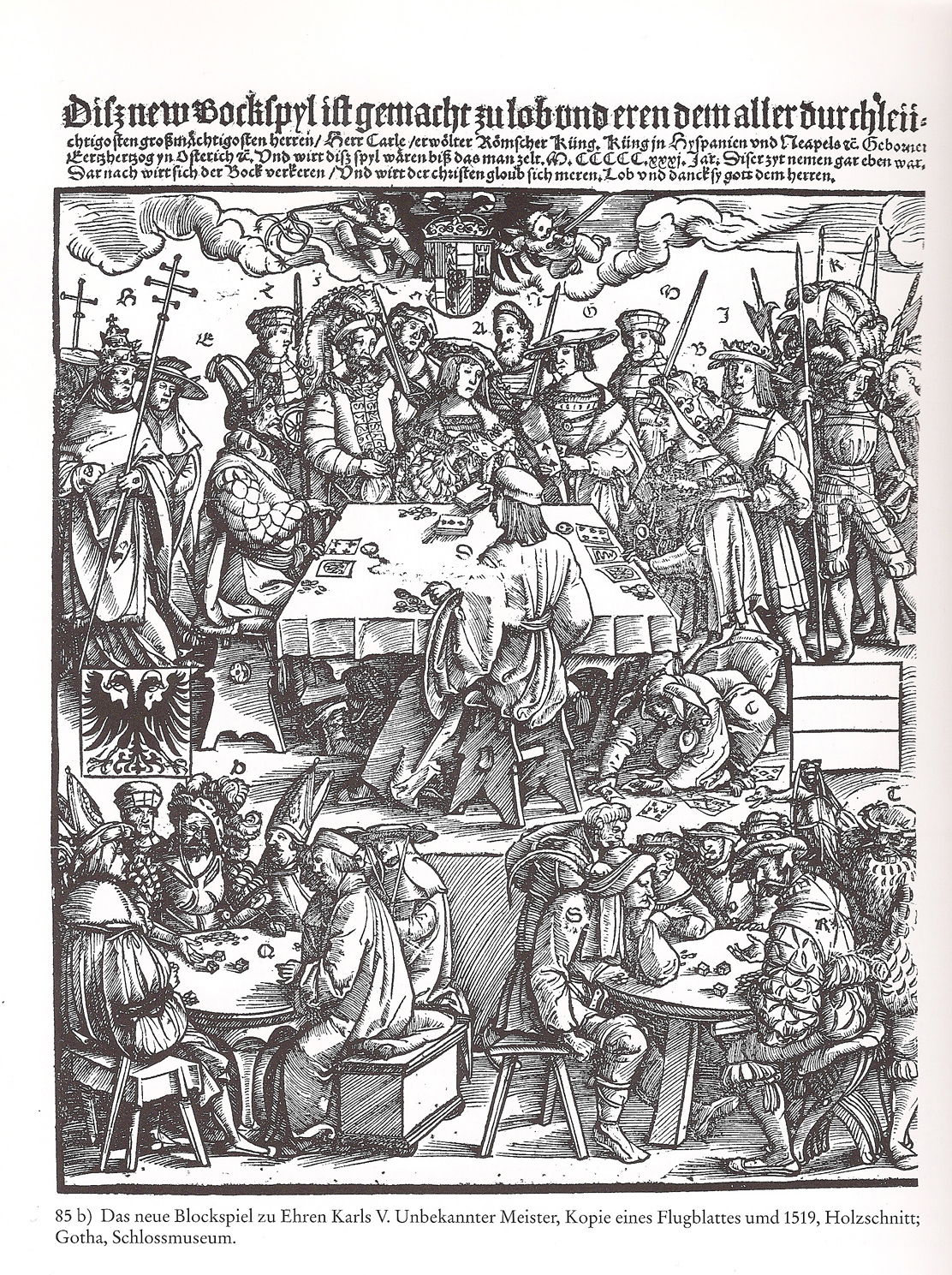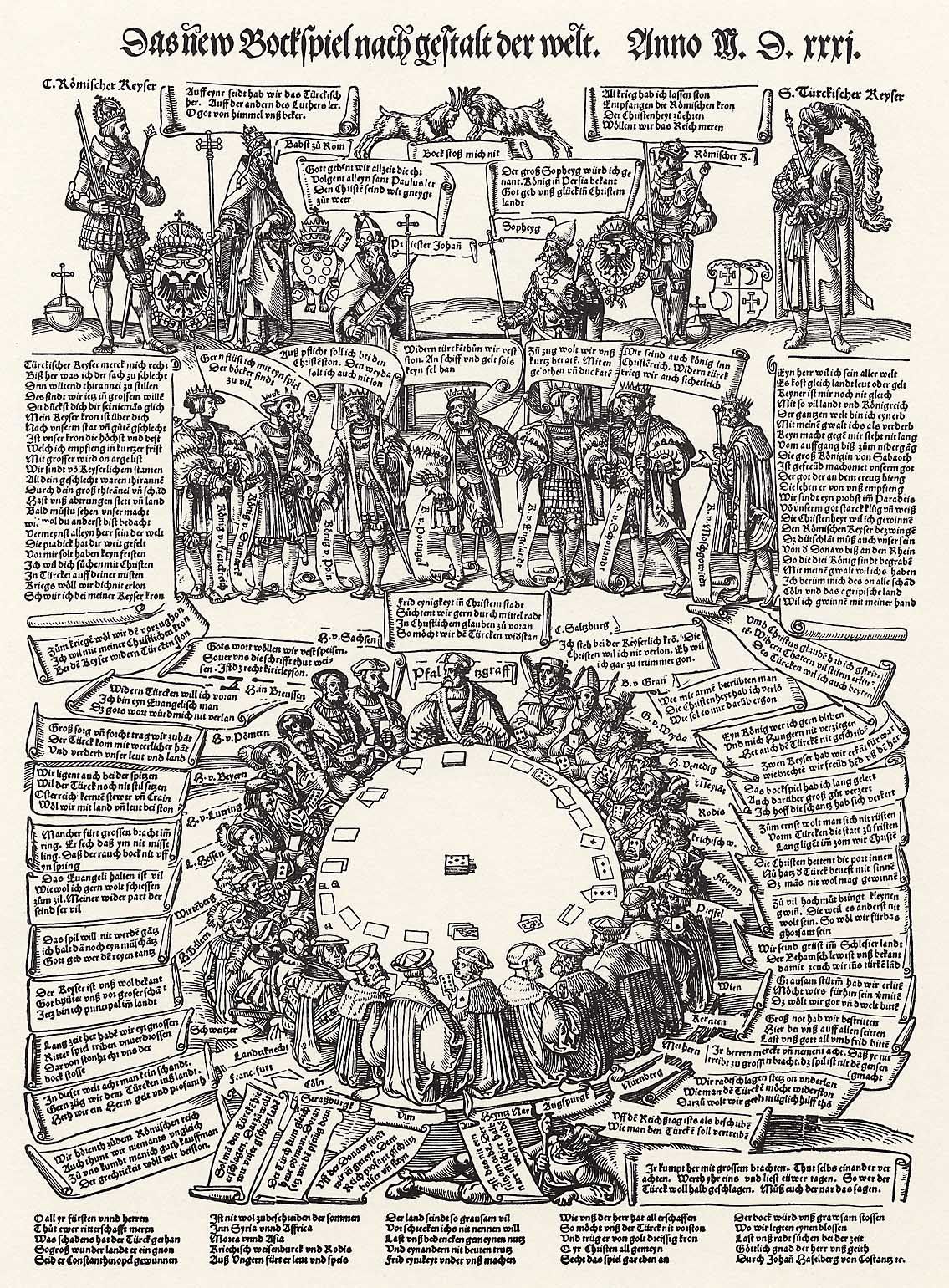The first I saw variously, one with 1499 as date and another with 1509 (both sources made not a very reliable impression). .
I think it is earlier than 1514 ...
The cuts are similar, but not the same. The German and the French text are NOT a translation.
Interesting is the situation of the Duc-de-Milan ...
... somehow in a bad position.
In the French version he is called
"Le duc de Milan le mure ... "
... which I would interpret in the manner, that "Lodovico il Moro" is still alive (he died 1508). I don't understand the French text good enough to be sure about it.
see letter "L"
The German text is much shorter, the word Moro is NOT indicated. The style of this engraving seems younger than the French version, similar to a style used in the later time of Maximilian.
Margarete (Maximilian's daughter) is connected to Flandern (where she returned around 1508), this is not indicated in the French text, but in the German.
So somehow, there's the impression, that the French text appeared before the German and before 1508.
In the bottom line texts of the 3 pictures we see a "Block-Spiel" mentioned ... this should be a writing error:
The German original gives a "Bockspyl", and this is a known game, which might be identical to "Flussen", which is mentioned at the other bottom-lines. "Flussen" should be predevelopment for the English "Flush" in the American Poker (for instance "Royal Flush"), and Bock-Spiel a predevelopment for "Poker" itself, with other early name forms like "bocken" or "pochen"
The Bockspyl is also theme in a 1531 picture of Woensam in Cologne (see the title: The new Bockspiel nach gestalt der welt ...) ...
Other works of Woensam who also made a few playing cards:
http://www.zeno.org/Kunstwerke/A/Woensam,+Anton
... which reflects the political situation of this time (fight against the Osmans with the defense of Vienna in 1529). Observe "Römischer Keyser" (= Charles V. : upper left corner) and "Türckischer Keyser" (= Sultan of the Osman: upper right corner)
"Bock" means in German language also "he-goat", for this reason the two fighting he-goats at the top of the picture between the emperors with the line "Bock stoß mich nit".
********
It's interesting, that in the 3rd picture of Ross, which with stronger variations follows the both others with a replacement of Maximilian with Charles V. the figure of the duke of Milan has been modified to the Fool:
In the later Woensam-picture, which took the Bockspyl-idea, but modified a lot more, we again find the Fool at the bottom line:















